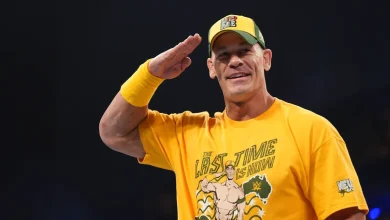Meryl Streep, Katie Holmes, and More Helped to Fête Tom Hanks’s Return to the Stage in This World of Tomorrow

“Once you get on the train, it takes off,” added O’Hara. “For me, it’s not fear or nerves—it’s adrenaline. It’s the kind of thing you use for your emotion, and it puts your brain into focus. The adrenaline is something that I thrive on for a tiny bit.”
The fact of acting with Hanks still hasn’t entirely settled in. “I’ve done a lot of shows, opened a lot of new shows, I’ve done revivals, and the best part about being on this stage is telling a story with one of my artistic heroes, and that’s Tom Hanks,” she said. “I’m going to say right in front of his face and make him embarrassed.”
Hanks: “Oh jeepers creepers!”
She continued: “He’s just how you think he is. He’s full of energy, he’s full of passion, he never sleeps because he wants to make this better, and he wants to make everybody feel seen and heard. He knows everybody’s name. I come in two hours early, and no one is here except for Tom Hanks. And he’s written the most beautiful story about moving forward with possibility and believing in the possibility of something better.”
Hanks, along with writer James Glossman, based the play on elements from Uncommon Type, Hanks’s collection of short stories published in 2017. In a time of declining trust in our institutions and the stymying of fundamental human rights, Hanks uses the play to discuss aspirational decency by setting the story during an idealized—and idealistic—period in American history.
“I’ve always had a fascination for the 1939 World’s Fair because it was so blatant for its optimism,” Hanks reflected. “It was called The World of Tomorrow, and it was viewed that all humans would have a common future—a shared one of opportunity, growth, and possibility powered by the four freedoms that everybody in the world was entitled to.”





